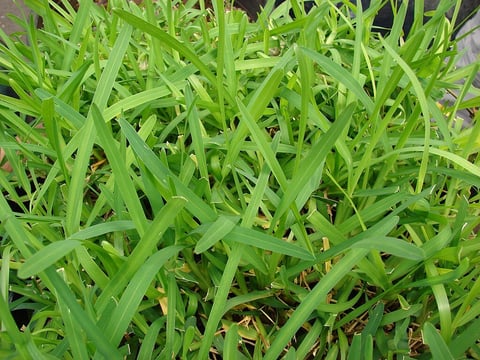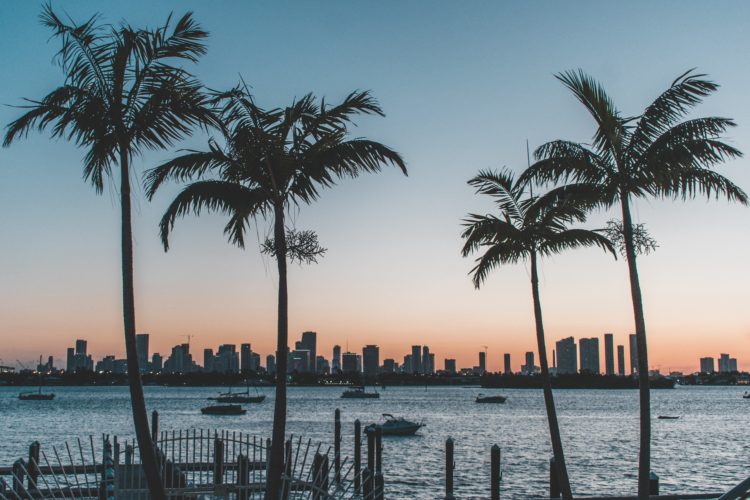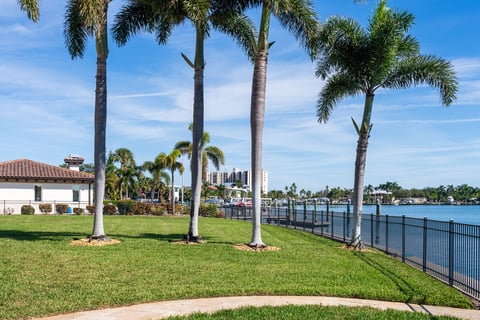


landcrafters
If you’ve never asked yourself this before, we can only assume you just moved to Florida, because anyone who’s lived here for more than one summer understands that the rainy season is going to make or break your water management system. Excess rain water, storm water, and other flooding (hello, ocean), can hit your property at any time, and if you have a good system in place, it will likely direct that excess water through your city’s sewers or back to your nearest waterway.
When it doesn’t, you’ve got yourself a real problem.
We’ve been in the landscaping business in Florida for nearly two decades – that’s twenty years of water management experience – so believe us when we say that water management matters. From drainage problems to flooding issues to extensive, expensive damage, ensuring that you’ve got a good water management system in place is going to make all the difference in the world for your property.
Check out some of our well-curated and experience-heavy information below to get the insight on what you need to know for water management in Florida.
For starters, let’s dive deeper into why water management matters in the first place. When your property’s water management systems are functioning properly, excess water will flow into your yard, and then quickly out into the proper channels. As Floridians, we understand that excess water is more than just a likelihood – in the summer, it’s a guarantee.
On average, St. Petersburg alone faces about 53.6 inches of annual rainfall every year, Tampa, not far behind, faces about 46.3 inches of rainfall every year on average.
Is your lawn prepared for this rainfall?
When you have an out-of-date drainage system on your property, you face costly damages as well as extensive repairs, both of which will have a draining effect on your wallet (the last place you wanted that draining to come into play, right?).
If you have a subpar system in place for water management, expect issues like mold, mildew cracks in your building, driveway erosion, sidewalk compromise, and even annoying and gross invasions from pests like bugs and rodents.
Are you convinced? We hope so. Now, it’s time to take a look at your own setup to ensure that you’re covered. If not, it might be time to give Landcrafters a call.
When it comes to looking for water draining and water management issues, we’ve got good news – you likely won’t have to look far. All it really takes is a good, thorough scan of your lawn, garden, and other property areas.
We suggest taking a gander at your property right after it rains. Do you notice large puddles on your lawn? Does it seem like the rain takes forever to evaporate? What about pools of water on your pavement? Do your sidewalks seem swamped?
Next, take a look at your foundations. How do your walls look – do you see cracks or tears in the foundation? Do you notice water stains? Is the integrity of your sidewalk slipping?
All of these are signs that should be taken seriously – if you notice any of these, it’s likely you’re facing an issue with the way excess water drains from your property. More so, you need to address them immediately to avoid costly damages and repairs.
The good news is that professionals can remedy water management issues, and at Landcrafters, we have lots of options when it comes to system management solutions. First, it’s important to determine the issues you’re facing that are specific to your property, this way, we can come up with the perfect solution, or a combination of solutions, to help you best combat the problem.
This is a popular choice in Florida because, well, as we said before, it rains. A lot. Especially during the summer (but, we don’t have to tell you Floridians that). This is also one of the most environmentally-friendly options for your property as well. A rainwater harvesting system takes excess water on your property, captures it, and then reuses it.
Perfect candidates for this type of system are buildings or properties that have large, flat roofs. A system of pipes, gutters, and other devices channels the rain from the roof toward a reservoir that stores the rain. Then, this water is used to replace other water uses – for example, some people use this rainwater to wash vehicles, the property, do laundry, or flush toilets.
Rainwater harvesting takes care of the excess water on your property, diverts it, and creates a use for it. It keeps it from flooding your property and provides you with extra water to aid in your landscape, reduce your water bill, and provide eco-friendly options.
Bioswales are another popular Florida option. They’re decorative, look lovely added to property, and are incredibly functional. A bioswale is a sloped trough that’s planted with plants and flowers that provides a direct path for water to run through. This is a slow, efficient process that aims to direct water on a functional path, but it does more than just that.
Typically, storm water runoff picks up contaminants and gross materials while it flows toward the groundwater system. Water that runs through bioswales is cleaned by the plants and soil before it enters the water table, a welcomed solution for both flooding and clean water issues.
Surely if you’re from Florida or have lived here for even a small amount of time, you’ve seen a retention pond before. A retention pond is a man-made pond featured in neighborhoods or corporate campuses that aims to collect excess water and release it back slowly at a nice, controlled rate in order to prevent flooding and erosion. When it rains, the water in them fluctuations in response to the rain and runoff. The pond will collect the water, then do its best to slowly release it back into the earth without causing excess flooding or damage to surrounding properties. A detention pond is similar in function, but instead is kept dry. Then, when it rains, they fill up, holding the water temporarily, then drained into another location slowly.
We hope our water management article helped open your eyes to your property! If you found that you’re dealing with more water management issues than you previously thought, we’d love to help! Give our office a call at (727)-201-3947. We’d be happy to lend an ear (or a crew) to you to help get your property back to tip-top shape. Interested in more articles and ideas from Landcrafters? We thought you might be! Check out our blog for tips, tricks, advice, and info about how to keep your lawn and garden its healthiest and happiest. Enjoy!





